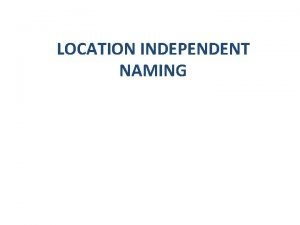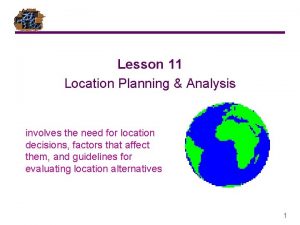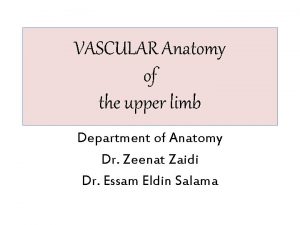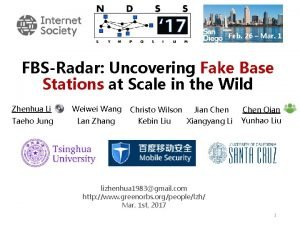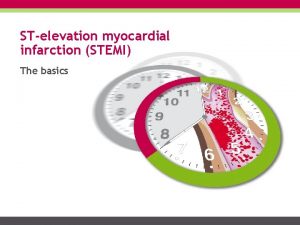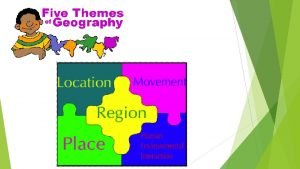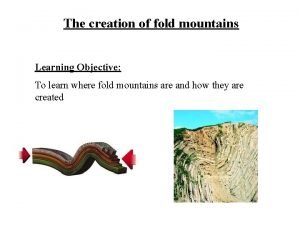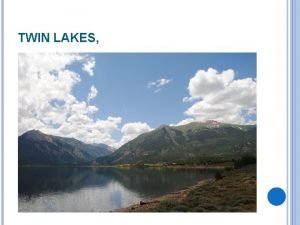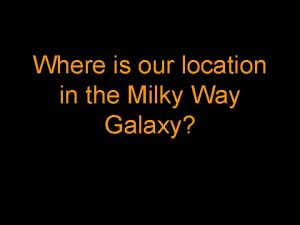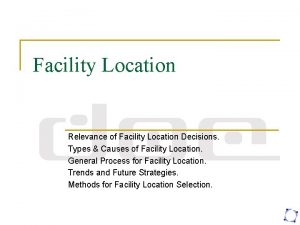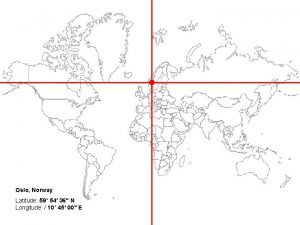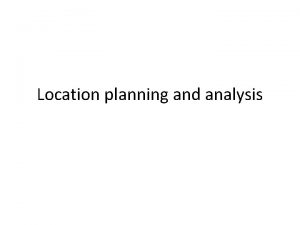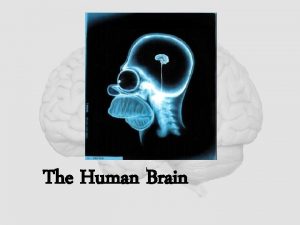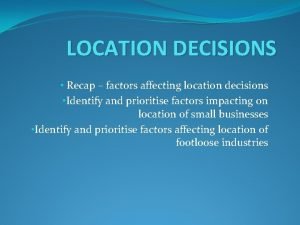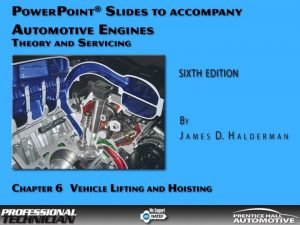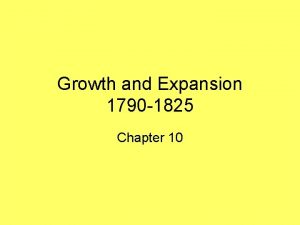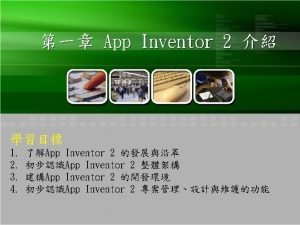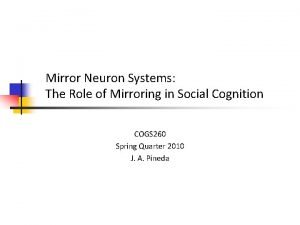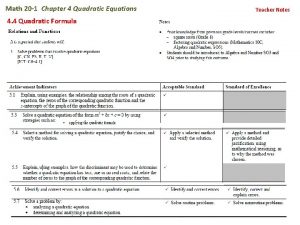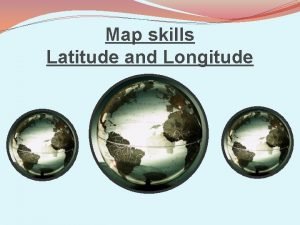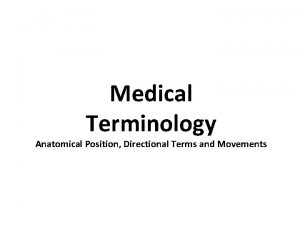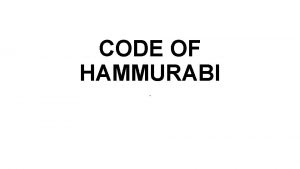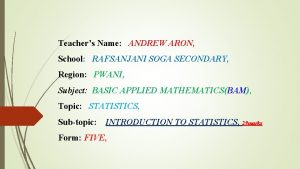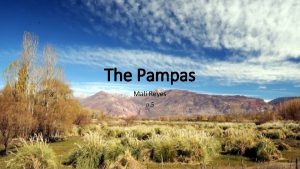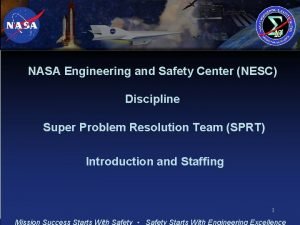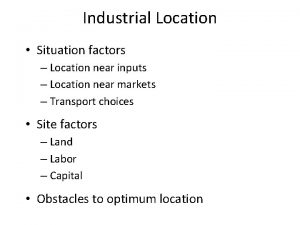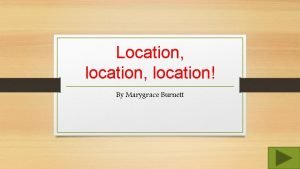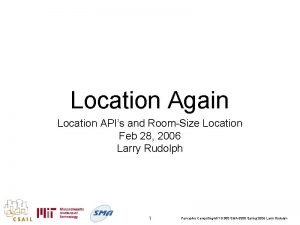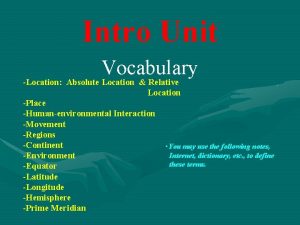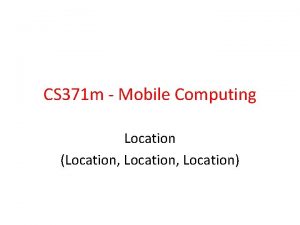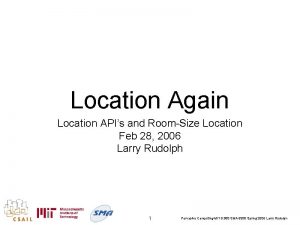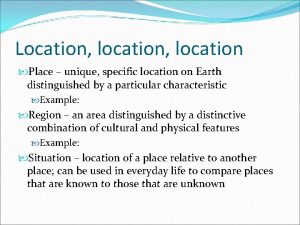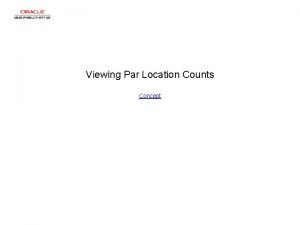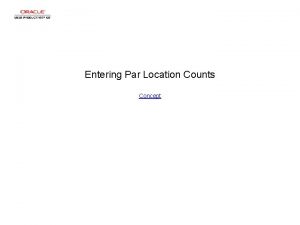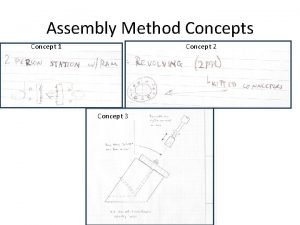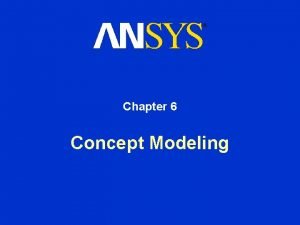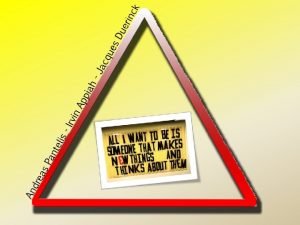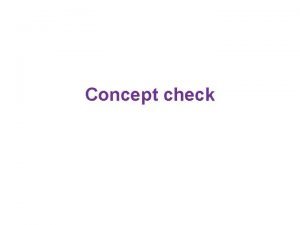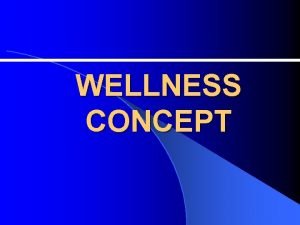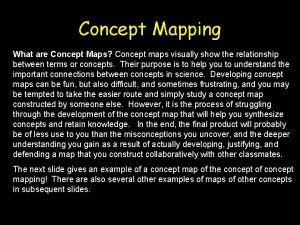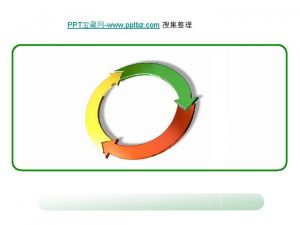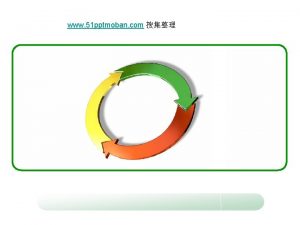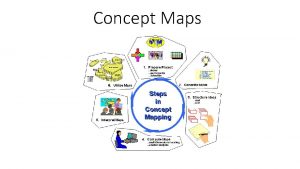Location 9 1 9 2 9 3 Concept
























































- Slides: 56

Location 9 -1 9 -2 9 -3

Concept Development 9 -1 Created for CVCA Physics By Dick Heckathorn 4 January 2 K + 5

Circular Motion a. If there is no relative motion between the train and the edge of the platform, how fast must the train move compared to the rim speed of the rotating platform?

Circular Motion b. Why is the stairway located at the center of the platform?

White Water Landing

Circular Motion a. How is the size of the round platform and train speed related to the amount of time that passengers have for boarding?

Circular Motion b. Why would this rotating platform be impractical for high speed trains?

Circular Motion a. The platform is not rotating on its axis and the people are at rest.

Circular Motion b. Make sketch of the missing When athe platform rotates, the people how they must person to in show the middle stands as lean in comparison. before. The person at the edge must lean inward as shown.

Circular Motion The on the right shows the Makesketch a sketch showing the some left shows container about awater. central orientation of the other two ducks toy ducks rotating floating on the axis constant speed. with at respect to the water surface.

Circular Motion The sketch on the right show the left shows water surface when the tire and is not water rotate about its central axis. rotating.

Circular Motion Draw the shape ofpeople thetire water Where would the be and to Now the tire is rotating Scalesuppose up the rotating model surface in same the cross-sectional view how would they be affected? about the axis while orbiting a rotating space habitat orbiting in above. in outer space.

Concept Development 9 -2 Created for CVCA Physics By Dick Heckathorn 15 December 2 K+3

Accelerating & Circular Motion v a a. Yourin body lurches: backward You’re a car at a traffic light. The light turns green and the driver b. The car accelerates: forward steps on the gas. c. Force on car acts: forward

Accelerating & Circular Motion v a You’re a. Yourdriving body lurches: along and forward approach a stop sign. The driver b. The car accelerates: backward steps on the brakes. c. Force on car acts: backward

Accelerating & Circular Motion a v a. Your continue body leans: drivingoutward and round a sharp curve to the left at constant b. Direction of acc. is: inward speed. c. Force on car acts: inward

Accelerating & Circular Motion 4. In general, the directions of lurch and acceleration, and therefore the direction of lurch and force are: the same not related opposite

Accelerating & Circular Motion a. The If it moves faster, its direction 5. whirling stone’s changes: slower of motionfaster keeps changing. b. This indicates that as the speed increases, acceleration: increases decreases stays the same

Accelerating & Circular Motion 6. Consider whirling the stone on a shorter string – that is, of smaller radius a. For a given speed, the rate that the stone changes direction is: less more the same b. This indicates that as the radius decreases, acceleration: increases decreases stays the same

Centripetal Force p 40 Ftable on rock Fstring on rock Fearth on rock 1. A rock tied to a post moves in a circle at constant speed on a frictionless horizontal surface. All the forces acting on the rock are shown.

Centripetal Force p 40 Ftable on rock Fstring on rock Fearth on rock a. The vector responsible for circular motion is: Fstring on rock b. The net force on the rock is: Fstring on rock

Centripetal Force p 40 Fequilibrium T on rock Fstring Fnet Fearth on rock W 2. The rock is tied to a string and swings in a circular path. It is not resting on a surface. No friction. Find the net force.

Centripetal Force p 40 T Fnet W a. What is the direction of Fnet? to center b. Does Fnet lie in plane of circular path? Y c. Is Fnet horizontal Component of T? Yes d. Is Fnet the centripetal force? Yes

Centripetal Force p 40 Fdisk on rock Ffriction Fearth on rock 3. The rock rides on a horizontal disk that rotates at constant speed about the vertical axis. Friction prevents the rock from sliding. Draw and label all vectors.

Centripetal Force p 40 Fdisk on rock Ffriction Fearth on rock b. Which force is centripetal? Ffriction c. Which force provides net force? Ffriction d. Why do we not say net force is zero? because centripetal acceleration is not zero

Centripetal Force p 40 Ffriction Fwall on rock Fearth on rock 4. Now the rock is held in place by friction against the inside wall of the rotating drum. Draw and label all forces that act on the rock.

Centripetal Force p 40 Ffriction Fwall on rock Fearth on rock a. Which force is centripetal? Fwall on rock b. Which force provides net force? Fwall on rock

Centripetal Force p 40 Fe Fwall on rock Fnet Fearth on rock 5. The rock rests against a frictionless wall of the cone which rotates about its vertical axis. The rock does not slide up or down. Draw and label all forces on the rock.

Centripetal Force p 40 Fwall on rock Fnet Fearth on rock a. Should Fnet lie in the plane of the circular path? Yes b. Why It provides the centripetal force for circular motion

Concept Development 9 -3 Created for CVCA Physics By Dick Heckathorn 15 December 2 K+3

1. From Bob’s point of view, he is at rest and sees Suzie moving: clockwise counter clockwise

2. When Bob rides in the opposite direction as the habitat rotates, Suzie sees him moving: faster slower

3. As Bob’s bicycle speedometer reading increases, his rotational speed decreases and the normal force that feels the weight decreases. So friction between the tires and the floor decreases.

4. When Bob gets his speed up to 30 km/hr, as read on his bicycle speedometer, Suzie sees him: motionless

5. Bouncing off the floor a bit while riding at 30 km/hr, and neglecting wind effect, Bob: hovers in midspace as the floor whizzes by him at 30 km/hr. and he finds himself in the same frame of reference as Suzie

6. Bob now rides in a clockwise direction, with the rotation of the habitat. Now Suzie sees him moving faster. 7. As Bob gains speed, the normal support force that feels increases. like weight

8. When Bob’s speedometer reading gets up to 30 km/hr, Suzie sees him moving 60 km/hr and Bob finds himself: pressed harder against the floor.

Next, Bob goes bowling. You decide whether the game depends on which direction the ball is rolled!

That’s all folks!




Bob is standing on a people mover (conveyor belt) at the airport which is moving toward the west at a speed of 6. 0 m/sec. Susie is standing to one side looking at Bob.

1. From Bob’s point of view, he is at rest and sees Suzie moving: westward eastward not moving

2. Thus Bob sees Suzie moving at the same speed but in the 3. same 4. opposite 5. direction.

1. 3. Bob starts walking to the east. Suzie will see Bob 2. speeding up 3. or 4. slowing down 5.

4. As Bob walks faster and faster, Suzie sees Bob 5. speeding up more 6. or 7. slowing down more

5. When Bob gets his speed up to 6. 0 m/s, Suzie sees him 6. moving at 6 m/s 7. motionless 8. moving at 12 m/s

1. 6. Bob makes a slight push on the conveyer belt while walking at 6. 0 m/s (east). 2. From Suzie’s point of view, he 3. will be moving towards the east 4. will be motionless 5. will be moving towards the west

1. 2. 3. 4. 5. 7. Bob now finds himself in the same frame of reference moving west moving east relative to Suzie

1. 8. Bob stops his eastward movement of a short time, thus not moving relative to the conveyor belt. He then starts walking towards the west. Suzie sees Bob 2. speeding up or slowing down

1. 9. As Bob speeds up (walking to the west), Suzie sees Bob 2. speeding up or slowing down

1. 10. Bob speeds up until he is walking at 6. 0 m/s relative to the conveyor belt. 2. Suzie sees Bob’s speed as 3. 6. 0 m/s E 4. motionless 5. 12. 0 m/s W

1. 11. Bob goes bowling on the conveyor belt. If the pins are set up so that he rolls the ball in a westerly direction, how should he alter his shot compared to the conveyor belt not moving? 2. none

1. 12. Bob goes bowling on the conveyor belt. If the pins are set up so that he rolls the ball in a easterly direction, how should he alter his shot compared to the conveyor belt not moving? none

1. 12. Bob goes bowling on the conveyor belt. If the pins are set up so that he rolls the ball in a northerly direction, how should he alter his shot compared to the conveyor belt not moving? None
 A cross country skier moves from location a
A cross country skier moves from location a Location planning and analysis in operation management
Location planning and analysis in operation management Actual self and ideal self
Actual self and ideal self Perbedaan selling concept dan marketing concept
Perbedaan selling concept dan marketing concept Fluke 789 fuse replacement
Fluke 789 fuse replacement Location independent support
Location independent support Location planning and analysis
Location planning and analysis Branches of axillary artery
Branches of axillary artery Capacitated plant location model excel
Capacitated plant location model excel Speed location
Speed location Short head of biceps brachii
Short head of biceps brachii Basin and range location
Basin and range location Apical pulse location
Apical pulse location Left upper sternal border
Left upper sternal border Stemi lead
Stemi lead Harappan civilization map
Harappan civilization map Nile river map
Nile river map Location of fold mountains
Location of fold mountains Vocal fremitus
Vocal fremitus Doldrums winds
Doldrums winds Enzymes examples
Enzymes examples Location of glycogen
Location of glycogen Where does pyruvate oxidation occur
Where does pyruvate oxidation occur Rise of the qing dynasty
Rise of the qing dynasty Space of traube
Space of traube What is the name
What is the name Describing location in a distribution
Describing location in a distribution Types of facility location
Types of facility location Longitude of oslo norway
Longitude of oslo norway Which number represents the location of ancient athens
Which number represents the location of ancient athens Location planning analysis
Location planning analysis Gustatory cortex location
Gustatory cortex location Forrester report location intelligence
Forrester report location intelligence Photo location
Photo location Examples of footloose industry
Examples of footloose industry Function of vomerine teeth
Function of vomerine teeth T bone location
T bone location Sae standard for hoist location
Sae standard for hoist location Economic characteristics
Economic characteristics App inventor ai
App inventor ai Epithelium location
Epithelium location Mirror neurons location
Mirror neurons location Figure 15-2 is a longitudinal section of a kidney
Figure 15-2 is a longitudinal section of a kidney Relative location of cairo egypt
Relative location of cairo egypt Math 20-1 quadratic equations test
Math 20-1 quadratic equations test Absolute location
Absolute location 5 themes of geography review
5 themes of geography review Anatomical foot positions
Anatomical foot positions Taj mahal location
Taj mahal location Hammurabi louvre
Hammurabi louvre Antecubitsl
Antecubitsl Lysosome location
Lysosome location Absolute location of australia
Absolute location of australia Principal cells location
Principal cells location Rafsanjani soga secondary school joining instruction
Rafsanjani soga secondary school joining instruction Las pampas mapa
Las pampas mapa Nasa safety center
Nasa safety center





